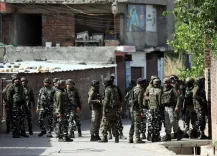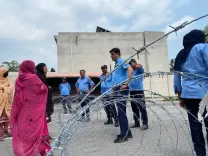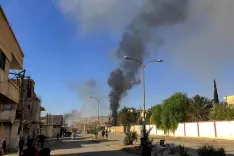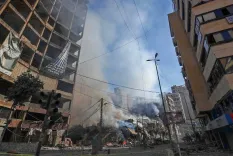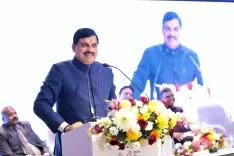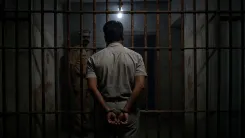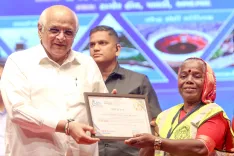Will Bangladesh Exhume Bodies of Gopalganj Victims Amid Public Outcry?
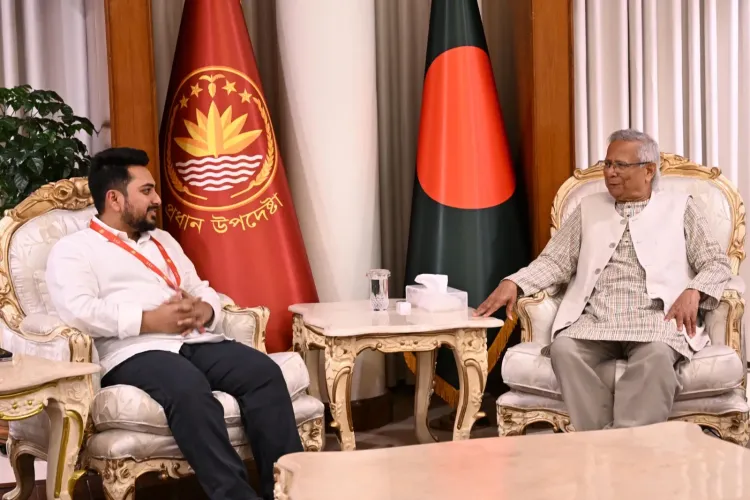
Synopsis
Key Takeaways
- Bangladesh's government may exhume bodies for autopsy amid public demands.
- Families claim bodies were retrieved without post-mortem examinations.
- Violent protests against the Yunus regime resulted in multiple casualties.
- Awami League condemns government actions as brutal.
- UN mission established to support human rights in Bangladesh.
Dhaka, July 19 (NationPress) Bangladesh's Home Advisor Jahangir Alam Chowdhury announced on Saturday that the remains interred in Gopalganj district during recent violence will be exhumed for potential autopsy if deemed necessary. Chowdhury claimed that the families of the deceased retrieved the bodies without any post-mortem examinations, according to local media reports.
Speaking to reporters in Dhaka, the Home Advisor's comments come as the interim government led by Mohammad Yunus faces intense backlash for burying those who lost their lives in the Gopalganj clashes without conducting autopsies.
Multiple reports indicate that the burial of individuals killed by law enforcement during protests on Wednesday (July 16) occurred without any post-mortem procedures.
"I received a phone call on Wednesday afternoon informing me that my nephew was shot dead. By the time I got there, the body had been taken home from the hospital. No autopsy was performed, and we did not obtain a death certificate from the hospital," one relative shared with Bangladesh’s leading daily, Dhaka Tribune.
At least five individuals have died and over 50 have been injured in Gopalganj - local sources suggest the death toll could be significantly higher - during a violent crackdown against demonstrators by Bangladeshi law enforcement following widespread protests against what many are calling “state-sponsored repression” under the Yunus regime.
Additionally, 164 individuals were detained across various regions of Gopalganj by Friday, with police filing three cases against approximately 2,800 individuals, as reported by local media.
Among the accused are several leaders and supporters from the Awami League’s student faction, Chhatra League.
The Awami League issued a harsh condemnation on Saturday, labeling the actions as a “brutal and deadly crackdown” on unarmed citizens in Gopalganj. The party accused the Yunus-led government of granting state forces the authority to “exterminate” those opposing the Yunus-backed National Citizen Party (NCP).
They criticized the press office's attempt to shift blame onto the families of the victims who were shot and buried without an autopsy.
Since the Yunus-led interim government assumed power last August, Bangladesh has witnessed severe human rights violations.
In a related development, the UN Human Rights Office and the interim government have established a three-year Memorandum of Understanding (MoU) to initiate a mission in Bangladesh aimed at enhancing the promotion and protection of human rights.
According to a press statement from the Office of the High Commissioner for Human Rights, the memorandum was signed by UN High Commissioner for Human Rights Volker Turk and Asad Alam Siam, Bangladeshi Foreign Secretary.
The new mission will provide training and technical assistance to the authorities in various domains to align with national and international human rights obligations, along with capacity-building for government entities and civil society.
Reports indicate numerous unprovoked and violent acts against journalists, police personnel, minorities, and individuals associated with the Awami League party throughout the past 11 months.
Allegations include killings, arbitrary detention on false criminal charges, unchecked mob violence, and incitement to religious violence, especially targeting Bangladeshi Hindus and the vandalism of Hindu temples. Various political figures have asserted that no actions have been taken to hold those responsible for these violations accountable.

